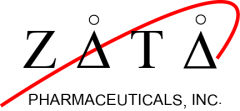Killed Whole Pathogen Vaccine Candidates With Preserved Antigenic Epitopes
Among the development of modern vaccines (subunit/conjugate, toxoid, DNA, recombinant, virus-like particles), the traditional live (attenuated) and especially inactivated (killed) vaccines are still overwhelmingly predominant. The presently available deactivating agents (formaldehyde, glutaraldehyde, ß-propiolactone) often modify the pathogen’s proteins. This changes the pathogen’s immunogenicity, which restricts the broad applicability of the method. Vaccination efficacy of currently used killed vaccines is low, less than 60-65%.

Pathogens killed by ZATA’s chemical inactivators (ZCI), demonstrate complete preservation of their antigenic epitopes, which indicates the feasibility of killed vaccines with maximum preservation of antigenic efficacy.
The chemical structure and the mechanism of action of the ZCIs are the same as those ZAP-Cs uses in the transfusion blood purification systems. ZCIs selectively and permanently inactivate pathogens by damaging their genomic molecules without affecting their proteins, and hence their serological characteristics. Differences in size and functionality enables the selection of optimal ZCIs for the inactivation of specific classes or even specific species of pathogens. ZCIs can be used for the development of killed vaccines against viruses, bacteria, and parasites, including pathogens for which no vaccine is currently available.
For further evaluation of the properties and the features of ZCI please click on the link below:
